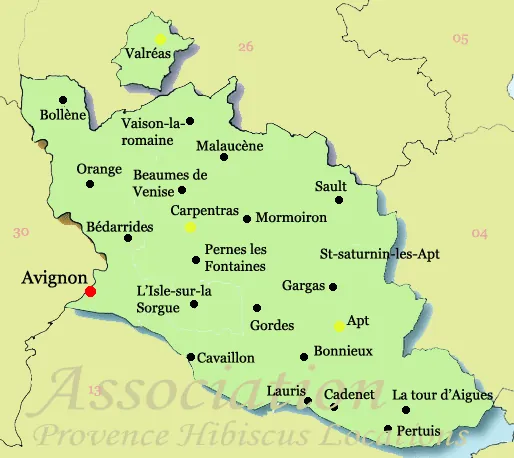
The Rhone to the west and the Durance to the south delimit the Vaucluse. It is divided into 5 tourist areas:
The Haut Vaucluse
Located between the Alps and the Rhone Valley, one discovers the city of Orange and its Roman vestiges of which several are classified in the world patrimony by the UNESCO, the mountainous relief such as and an extremely fertile area that is home to much of the French early-growing and wine-growing culture.
The Grand Avignon
Avignon is an important city located at the crossroads of Provence and Languedoc near the Mediterranean. The historical richness of Avignon like the Pont d’Avignon, its ramparts and its palace of the Popes make it a city of history and a city of culture, symbolized by the Festival of Avignon.
The Lubéron
It is characterized by the mountains stretching from the Alps of Hautes Provence to the plain of Vaucluse, the Lubéron marks a natural border to the south of the department. This territory is home to a diverse ecosystem. It has been classified as a UNESCO Biosphere Reserve and is home to the Lubéron Regional Nature Park
The Mont Ventoux
Mont Ventoux, the Giant of Provence « which culminates in 1.912 m, Dominates the Vaucluse landscape. Its natural assets have enabled it to benefit from a classification in the biosphere reserve by UNESCO.
The Sorgue
This territory is mainly based on water since the two main sites are l’Isle sur la Sorgue and Fontaine de Vaucluse . The natural site of Fontaines de Vaucluse and its source are the most visited of the department and the many canals of the Sorgue which criss-cross the village make it a site of charm.
ADVERT: Yann lefebvre Editing video works
